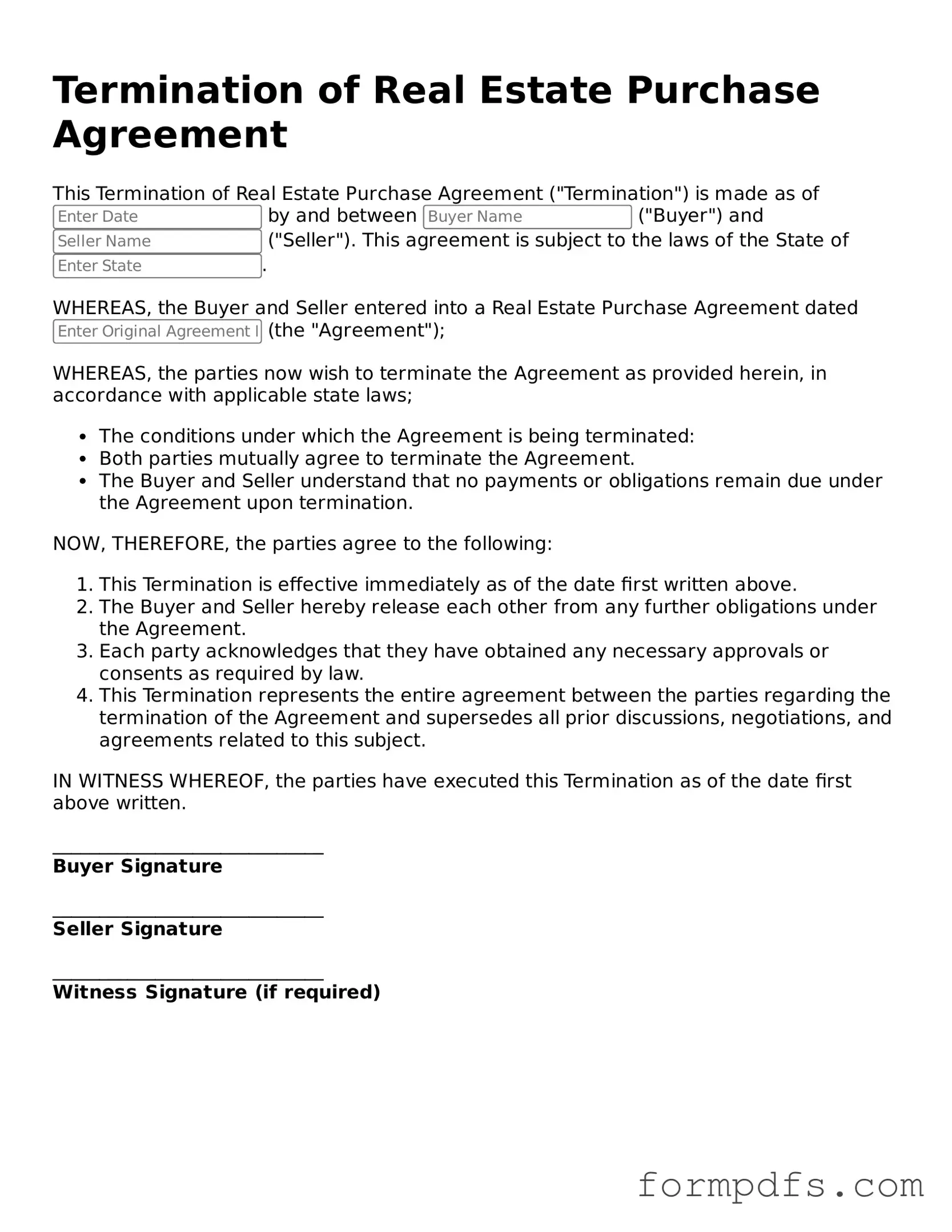What is a Termination of Real Estate Purchase Agreement form?
This form is used to formally cancel a real estate purchase agreement between the buyer and seller. It outlines the mutual decision to terminate the agreement and specifies any conditions or terms related to the cancellation. It serves as a record that both parties agree to end the transaction without proceeding to closing.
When should I use this form?
You should use this form when both the buyer and seller agree to terminate the purchase agreement. This may occur for various reasons, such as financing issues, failure to meet contingencies, or changes in personal circumstances. It is essential to document the termination to avoid potential disputes in the future.
Do both parties need to sign the form?
Yes, both the buyer and seller must sign the Termination of Real Estate Purchase Agreement form. This ensures that both parties acknowledge and consent to the termination. Without both signatures, the termination may not be legally binding.
What happens after the form is signed?
Once the form is signed by both parties, it should be distributed to all relevant parties involved in the transaction, including any real estate agents and attorneys. It is advisable to keep a copy for personal records. The termination effectively nullifies the original agreement, releasing both parties from their obligations under that contract.
Are there any fees associated with terminating a real estate purchase agreement?
There may be fees involved, depending on the terms outlined in the original purchase agreement. Some agreements include clauses that specify penalties or fees for termination. It is important to review the original contract to understand any financial implications before proceeding with the termination.
Can a buyer or seller terminate the agreement unilaterally?
Generally, a buyer or seller cannot unilaterally terminate the agreement unless specific conditions allow for it, such as a contingency clause in the contract. If one party wishes to terminate without mutual consent, they may face legal consequences. Therefore, it is crucial to follow the proper procedures and communicate openly with the other party.
What if there are disputes regarding the termination?
If disputes arise regarding the termination of the agreement, it is advisable to seek legal counsel. An attorney can help interpret the terms of the original contract and provide guidance on how to resolve any conflicts. Mediation may also be an option to facilitate a resolution between the parties.
